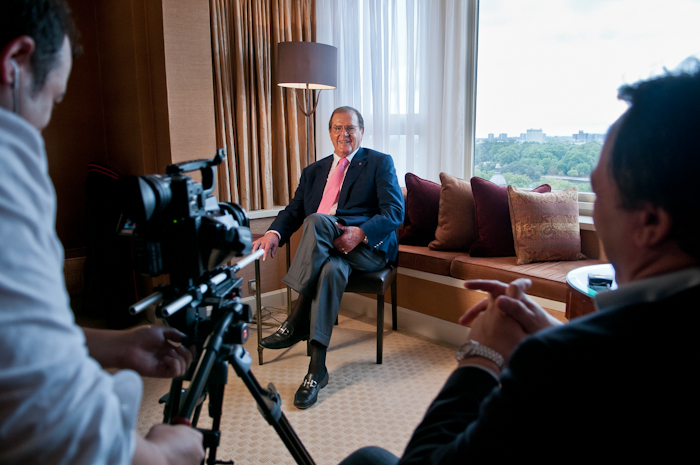On-camera interviews with subjects are often key parts of a documentary film. They go beyond just simply asking your interviewee one question after another, however. Here are 5 quick techniques for improving your on-camera interviews from Sanora Bartels, Chair of Documentary Filmmaking at New York Film Academy Los Angeles (NYFA-LA).

Don’t Start with the Cameras Rolling
If the interview is taking place in the Interviewee’s space, one of the first things I do when I arrive “on set” is to ask about something interesting in the room or comment on the view. I do this in order to have a conversation about something other than the “subject at hand.”
When you discuss unrelated topics, it gives you an opportunity to find common interests and build trust. Related to this, you might find that you’ll need to do a preliminary interview without crew in order to form a relationship with your subject. Interviews are really good conversations. In-depth conversations only happen when the two people trust one another. This trust will show in the footage.
Once we start rolling, I start by asking easy questions about family history, their personal background, educational background, etc. These allow them to settle into a rhythm of conversation and then we’re off and running.
Don’t Fill in Pauses
Because an interview is very much a conversation, we’re sometimes too tempted to set someone at ease and try to “rescue” them from a perceived lapse in memory or pause. It’s almost never beneficial to fill in these pauses. The interviewee needs time to think and explain themselves and, more importantly, if it’s an emotional topic, they may need time to gather their strength to go on. At that moment, there is a line they cross from “the facts” into deeper meaning and perhaps more personal revelation. One of the best examples of this is in the Errol Morris documentary Fog of War with Robert McNamara.
Use Other People’s Labels
If your subject is talking about their supervisor whose name is Sandra and referring to her as “my supervisor” then you should use those word labels/markers as well. Don’t refer to her as Sandra if they refer to her as “supervisor.” Example: “How did your supervisor communicate the change?”
Ask Open-ended Questions
Leading questions lead to one-word answers, which aren’t very informative or compelling to watch. Interviews look for much more in-depth answers, information that helps tell a story. Interviewers need to think about phrasing their questions to invite longer explanations. Questions that invite explanation often start with “how” or “why.” Alternatively, you can follow up an opening statement with: “Tell me more about that” or “I am not sure I understand.”
Repeat A Single Word for More Information
If I feel the Interviewee has stopped just short of going deeper into the story, I use a trick that comes from everyday conversation: repeat their last word or phrase to prompt them to continue.
For example, the Interviewee may end their statement about their livelihood being threatened by climate change saying, “it’s just not sustainable.” The next question from me could simply be “Sustainable”? This simple cue allows them to explain and the conversation continues!
Written by Sanora Bartels, Chair of the Documentary Department, NYFA, Los Angeles.
